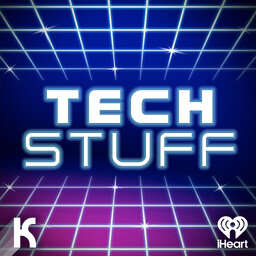A Look Back at 2021 in Spaaace (and Beyond)
As we wrap up our look back on 2021, we talk about some of the big stories involving space missions. We also look at what Tesla was up to in 2021 and we look ahead at a very different CES 2022.
Learn more about your ad-choices at https://www.iheartpodcastnetwork.com
 TechStuff
TechStuff


